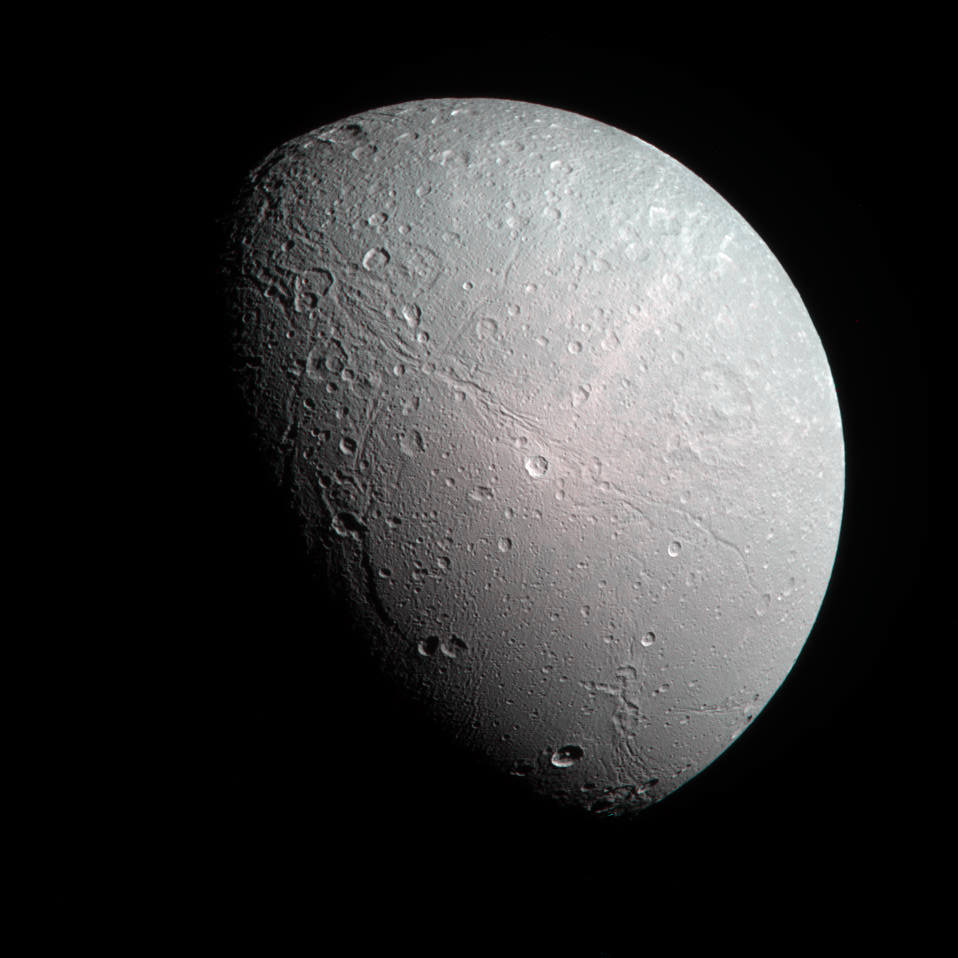Although made mostly of ice and rock, Saturn's moon Dione (pronounced
dee
-oh-nee) does have some color to it, as seen in this color-composite made from raw images acquired by Cassini on December 23.
700 miles (1120 km) wide, Dione is covered pole-to-pole in craters and crisscrossed by long, bright regions of "wispy line" terrain — the reflective faces of sheer ice cliffs and scarps that are too steep for darker material drifting in from Saturn's E ring to remain upon.
The composite was assembled from raw images captured in red, green and blue visible light wavelengths by Cassini from a distance of 154,869 miles (249,238 km).
The view above looks at a region on Dione's mid-northern hemisphere. The bright-walled crater in the center surrounded by warmer-hued terrain is named Creusa, and the long rift system next to it is Tibur Chasmata, which runs north-to-south. Dione's north pole is to the upper left.
Dione's heavily cratered areas are most common on its trailing hemisphere. Logically, a moon's leading hemisphere should be the more heavily cratered, so it has been hypothesized that a relatively recent impact spun Dione around 180 degrees. The moon's small size mean that even a modest-scale impact could have done the job.
Relative sizes of Earth, Moon and Dione (J. Major)
Dione orbits Saturn at a distance of 209,651 miles (377,400 km), closer than our Moon is to us.
See more images and news from the Cassini mission
here
. And for more on Dione, see some of my
previous posts on Lights in the Dark.
 Universe Today
Universe Today
